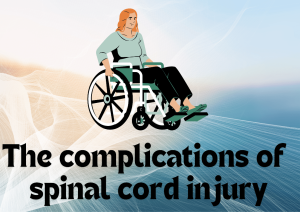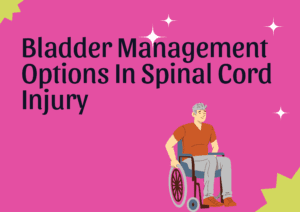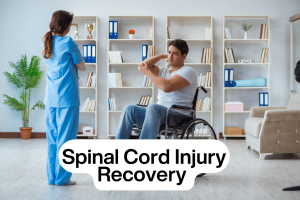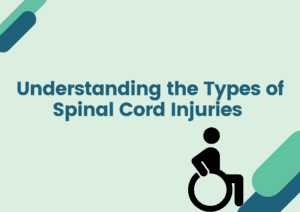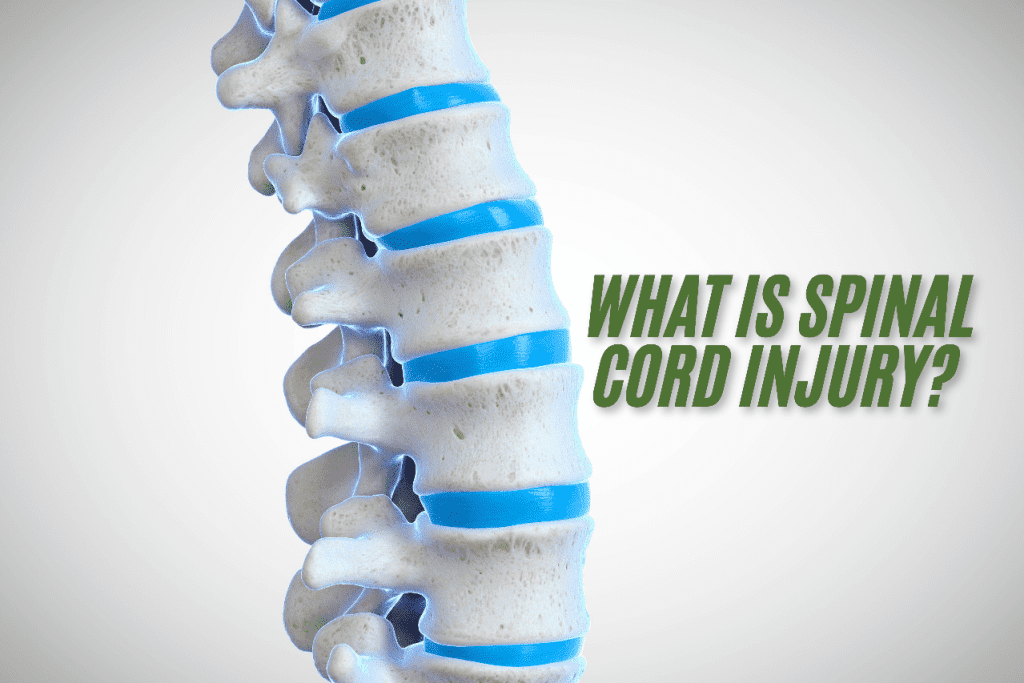
By Scihealthhub – September 8, 2024
In this article, we will give you a general overview of spinal cord injuries (SCIs), including how the spinal cord works, the causes and symptoms of spinal cord injuries, how to prevent spinal cord injuries and much more.
In doing this, we will try to keep things very simple so you can understand.
What is spinal cord injury? Spinal cord injury is a health condition that happens when there is damage to the spinal cord. This leads to disruption in communication between the brain and the part of the body below the point of damage on the spinal cord.
Devastating, life-altering, catastrophic, debilitating etc are some of the words that have been used to described the seriousness of spinal cord injury.
Spinal cord injury can make it difficult for the individual to perform normal daily activities, such as walking, using one’s hands, emptying of bladder, emptying the bowel or washing and dressing oneself.
Many of the people affected never recover all, or even any, of their body’s capabilities afterwards.
You will find out why this is so in a moment when we will discuss how the spinal cord works.
What is the global burden of spinal cord injury?
The World Health Organization most recent record showed that an estimated 15.4 million people were living with spinal cord injury globally (1).
Between 250,000 and 500,000 new cases of spinal cord injury happens every year, with road traffic accidents and falls being the most common cause.
Consistently, more males than females are affected by spinal cord injury. In fact, according to records in United States, males account for approximately 78% of new spinal cord injury cases each year (2).
The reasons are not far fetched. Males are more likely to engage in high risk activities such as risky driving and contact sports. Also, males are more likely to experience violent trauma, such as gunshot wounds, and work in industries with higher injury risks such as construction.
Scientists have established that individuals with spinal cord injury have a lower life expectancy compared to the general population, with a gap of around 10-15 years. People with spinal cord injury often die earlier because of higher likelihood of developing serious and even life-threatening secondary health conditions.
These secondary health conditions are so called because though spinal cord injury may contribute to the development or worsening of these conditions, they occur after the initial spinal cord injury and are not directly related to the initial trauma or disease that caused the spinal cord injury.
Common secondary health conditions that can occur after a spinal cord injury include pressure sores, urinary tract infections, deep vein thrombosis, respiratory complications, autonomic dysreflexia, cardiovascular disease, anxiety and depression.
However, the good news is that these secondary conditions can be prevented or effectively managed with proper self-health education (that’s what we do at scihealthhub.com) and good quality health services.
How the spinal cord works
The brain and spinal cord make up the central nervous system (CNS). They are “central” to nervous system because they receive, send, process and interpret information from the entire body.
The spinal cord is a bundle of nerves that links the brain with the rest of the body. It is divided into segments, each controlling specific parts of the body.
The spinal cord is surrounded by bones called vertebrae and extends from the base of the brain down the center of the back to a little above the waist.
You can think of the spinal cord like a superhighway of information between the brain and the rest of your body.
Here’s how it works:
- Messages sent out from the brain: the brain sends messages (like emails) to the spinal cord, telling a part of the body what to do (e.g., move the arm).
- Spinal cord receives messages: The spinal cord receives these messages and acts as a relay station, deciding where to send them next.
- Messages sent to the body: The spinal cord sends the messages to the relevant parts of the body (e.g., muscles, skin, organs), telling them what to do.
- Messages sent back to the spinal cord: the body sends messages back to the spinal cord, reporting sensations, movements, and other information.
- Messages sent back to brain: The spinal cord sends these messages back to the brain, keeping it informed about what’s happening in the body.
Therefore, from the above description, you can now see why an injury to the spinal cord can disrupt the flow of messages between the brain and body, leading to various effects, depending on the location and severity of the injury.
What is the cause of spinal cord injury?
Spinal cord injury may result from anything that can cause damage to either the spinal cord itself or to the bones that surround the spinal cord (vertebrae).
The most common causes of spinal cord injury globally include:
- Road traffic accidents: These are the most common cause, accounting for nearly up to 40% of new cases. The different situations of road traffic accidents that can result in spinal cord injuries include vehicle collisions, ejection from the vehicle, motorcycle accidents, tricycle accidents, pedestrian-vehicle accidents and bicycle accidents.
- Falls: is another major cause of spinal cord injury, accounting for about 30% of new cases.
- Falls from slippery surfaces, height (roofs, ladder, tree), stairs and sporting activities can cause spinal cord injury.
- Violence-related injuries: Violent attacks from gunshot wounds and knife wounds can cause spinal cord injury.
- Sports and recreation activities: Contact sports collision (in football, rugby, hockey), diving accidents, gymnastic accidents, surfing accidents, etc can result in spinal cord injury.
- Work-related injuries: such as equipment accidents (eg being struck or crushed by heavy equipment), construction site accidents, heavy lifting and bending injuries, mining accidents and warehouse accidents.
- Earthquakes: During earthquakes, people may be hit by falling debris while sitting or standing and this can lead to spinal cord injury.
- Diseases: Certain diseases can cause or raise the risk of spinal cord injuries, including polio, certain cancers, spine tumours, arthritis, syringomyelia, spinal cord infections, spinal cord ischemia, Guillain-Barré syndrome, multiple sclerosis, transverse myelitis osteoporosis and osteopenia
- Medical and surgical complications: Sometimes complications during surgery or medical treatment can lead to spinal cord injury. Infections, bleeding or direct nerve damage can sometimes occur during spinal procedures and result in spinal cord injury.
What are the symptoms of spinal cord injury?
The symptoms of spinal cord injury will differ from person to person depending on point of the spinal cord affected and the severity of damage.
Spinal cord injury can cause temporary or permanent changes in sensation (feeling), movement and other body functions below the point of injury.
These changes can happen immediately after injury (primary damage) or develop over time from bleeding and inflammation in the spinal cord (secondary damage).
Spinal cord injury can be complete or incomplete, depending on how much sensation and ability to control movement is lost.
It is complete If all sensation and all ability to control movement are lost below the spinal cord injury.
Incomplete spinal cord injury on the other hand is when some sensation and control of movement remain below level the injury.
Furthermore, if the injury to the spinal cord is minimal and causes little or no nerve cell death, a person can make an almost complete recovery.
To summarise, spinal cord injury can cause the following symptoms below the level of the injury:
- Loss of or change in sensation, including numbness and tingling sensation
- Loss of movement
- Loss of bladder control
- Loss of bowel control
- Muscle spasms (uncontrolled, intermittent non-sustained muscle contractions) and spasticity (sustained and uncontrolled muscle contractions)
- Changes in sexual functions that may negatively affect libido, achieving and maintaining an erection, ejaculation, orgasm and fertility.
- Chronic pain
- Difficulty in breathing and weak cough
Who is likely to get spinal cord injury? (what are the risk factors for spinal cord injuries?)
Anybody can get spinal cord injury since accidents are the most common cause. However, certain factors can make a person more likely of having a spinal cord injury. These include:
- Being a male – we have earlier explained why overwhelming majority (80%) of new cases of spinal cord injury are males.
- Young adults – more than half of spinal cord injuries happen to people age 16-30
- Elderly people – people 65 and above are at increased risk of falls
- Alcohol use or substance abuse – excessive alcohol consumption can increase the risk of injury by affecting judgement, vision and mental alertness and coordination.
- People with certain diseases conditions of the bone or joint – for example arthritis, osteoporosis.
What can we do to prevent or avoid spinal cord injury?
From the causes and risk factors for spinal cord injury, one can deduce what can be done to prevent, avoid or reduce it. They include:
- Always wear seatbelts while in a moving vehicle. Research show that the use of seat-belts can reduce the likelihood of injury or death by 40-50% for drivers and front seat passengers and by about 25% for passengers in rear seats (3)
- Don’t drive while under the influence of alcohol or drugs. Also don’t ride with a driver who has been drinking.
- Wear a helmet while riding a bicycle, tricycle or motorcycle
- Check water depth before diving – don’t dive into water of unknown depth or underwater debris.
- Reduce the chances of falls at home. For older adults, use a step stool with a handle to comfortably reach high-up objects, instal railings or grab bars on the stairs and in bathtubs, maintain good lighting and put nonslip mats on tile floors and in the tub or shower. For young children, safety gates and window guards can be used to block stairs and windows respectively.
- Wear the recommended safety gear when engaged in sporting or recreational activities.
- Keep firearms locked away and safe
- Improvements in road infrastructure, vehicle maintenance and people’s road behaviors can reduce road traffic accidents.
- For people with diseases that can cause or contribute to spinal cord injury, early diagnosis and treatment can save the situation.
In conclusion, with a good knowledge of the causes, symptoms and risk factors of spinal cord injury, individuals can take steps to prevent this devastating health condition.
If you liked this article, please press the like button, subscribe, follow our social media handles and feel free to drop your comments or questions.

